


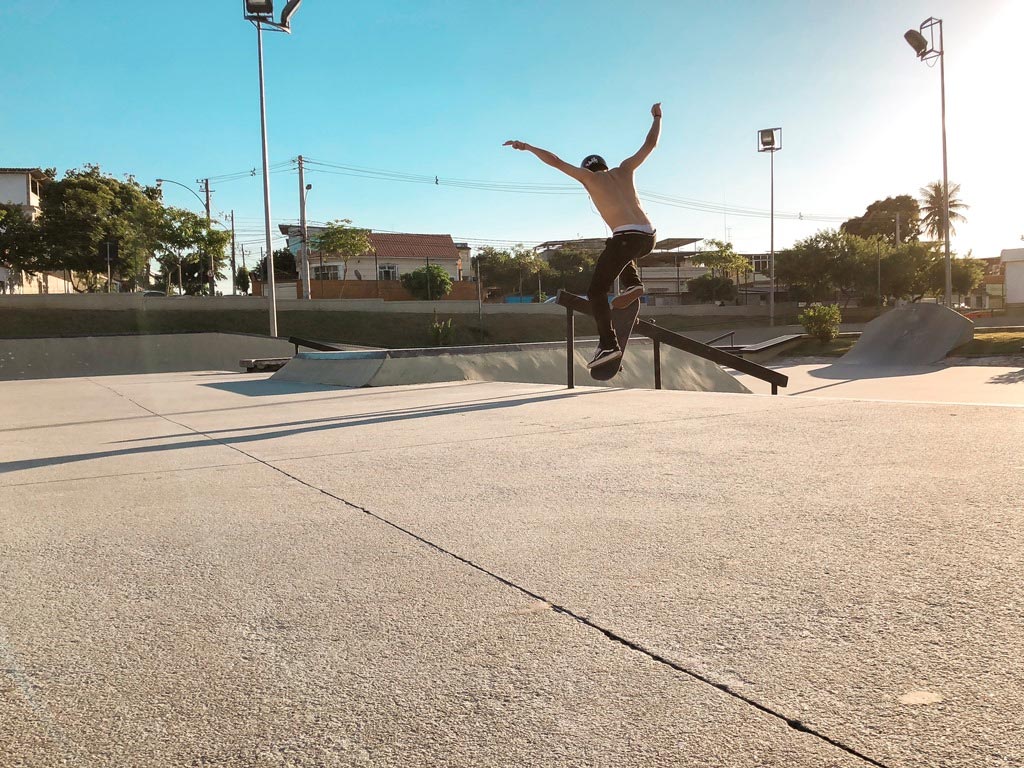


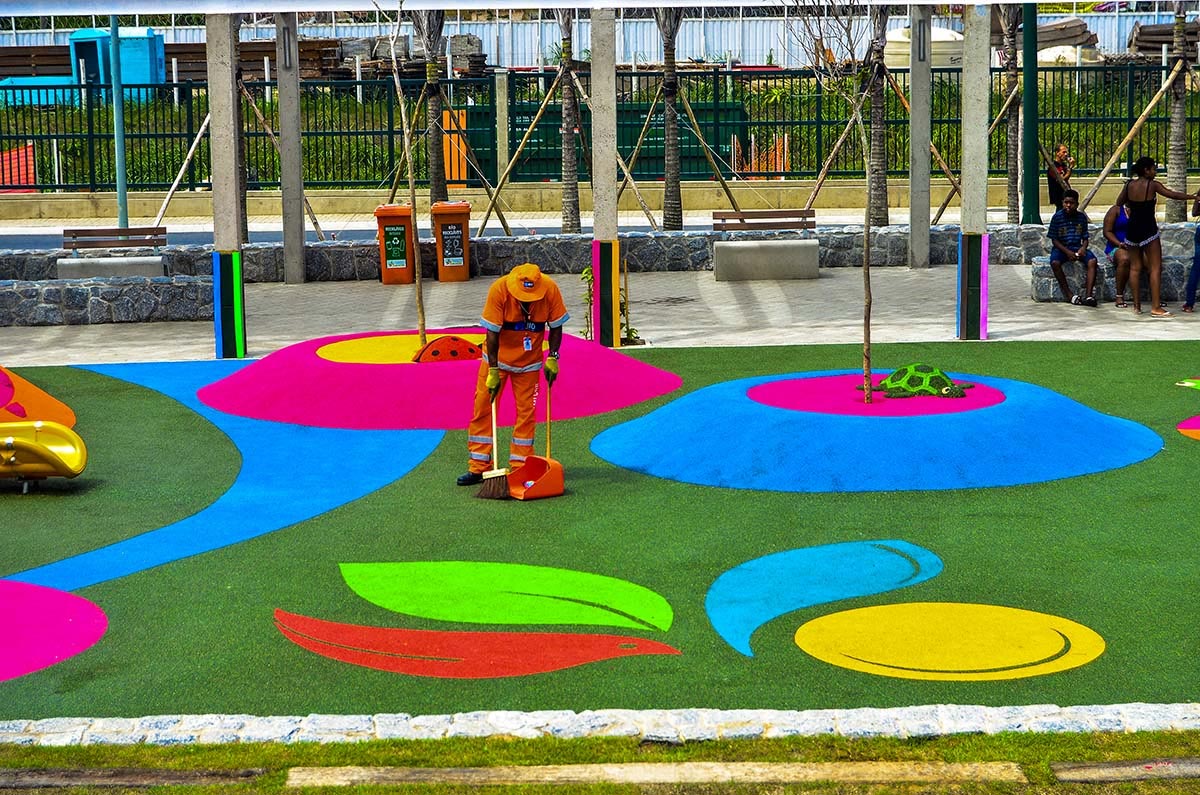

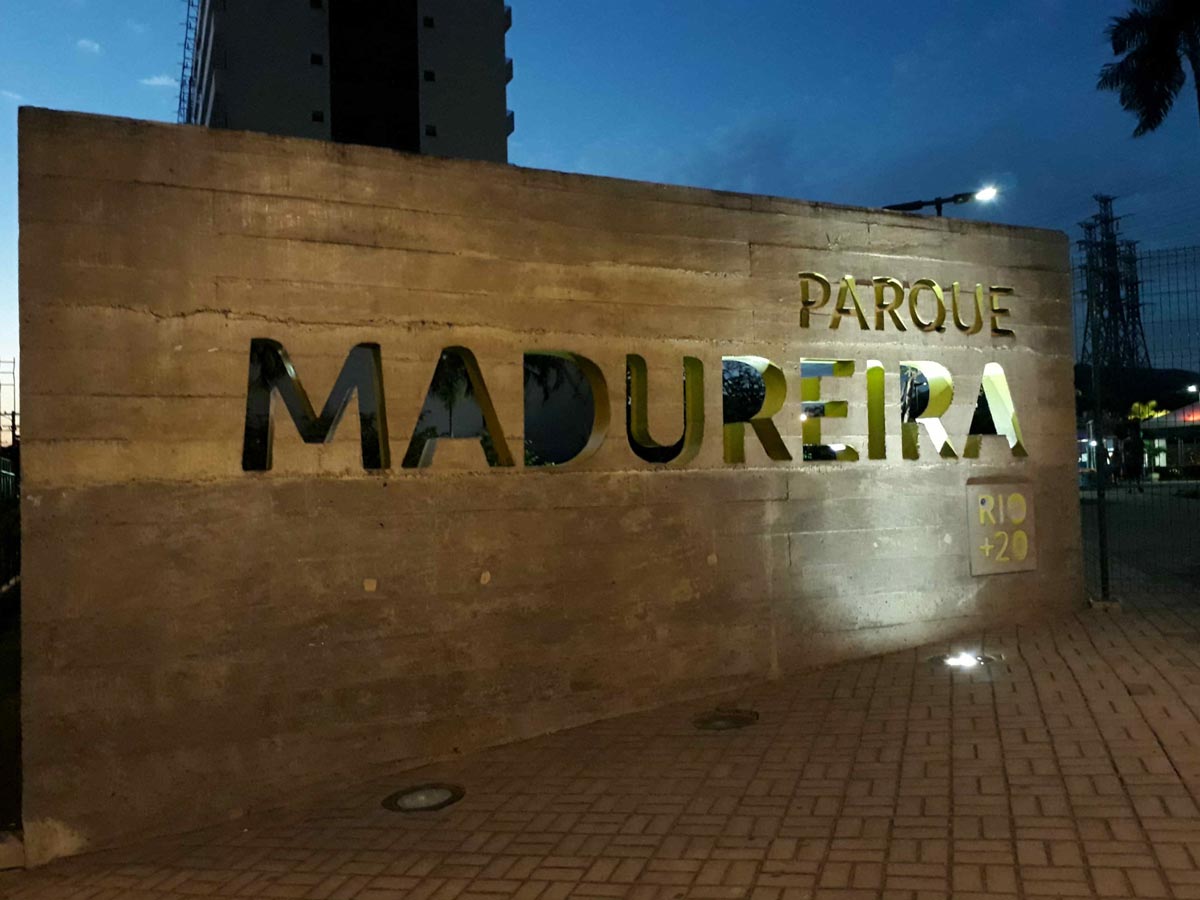
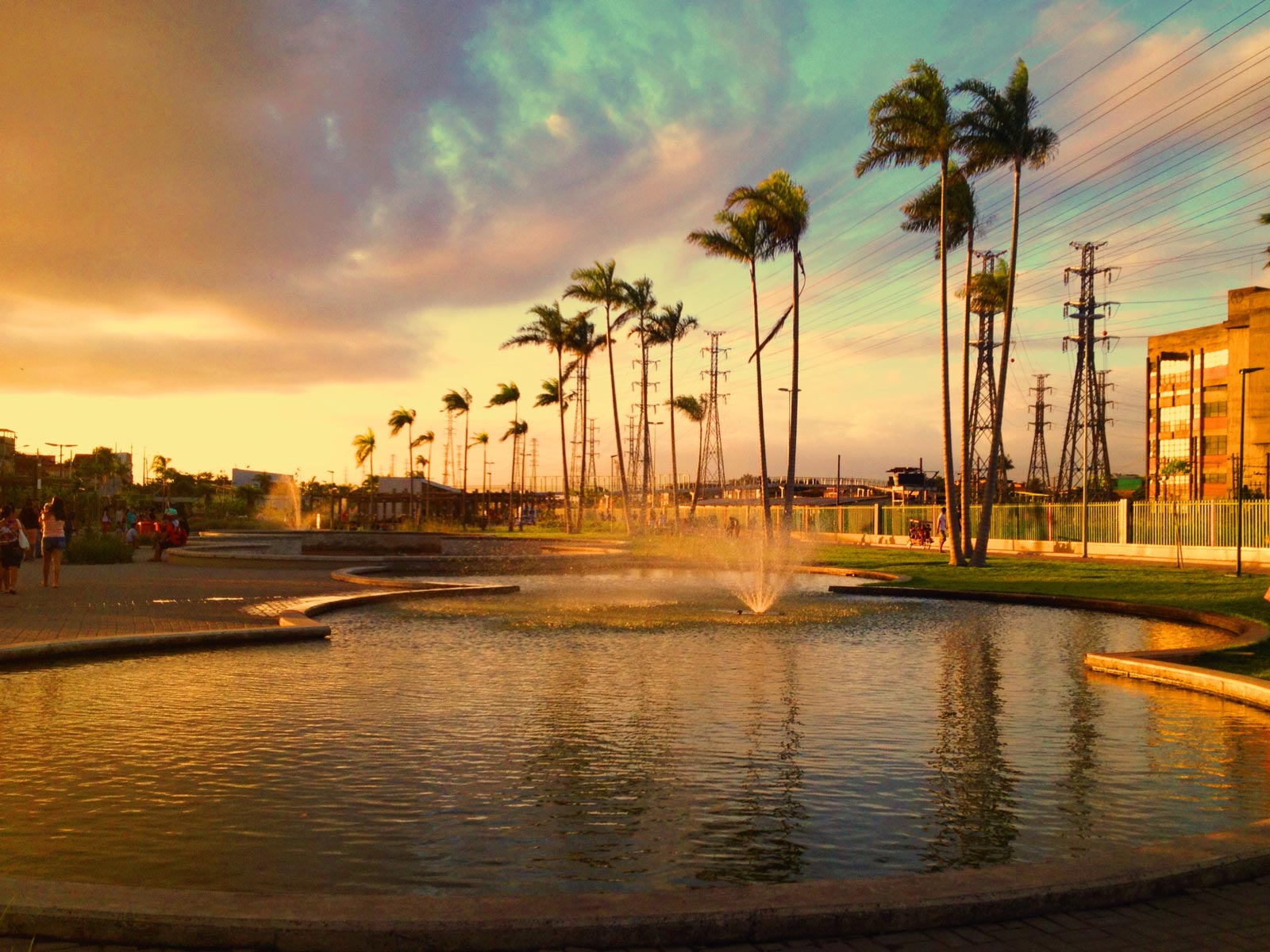
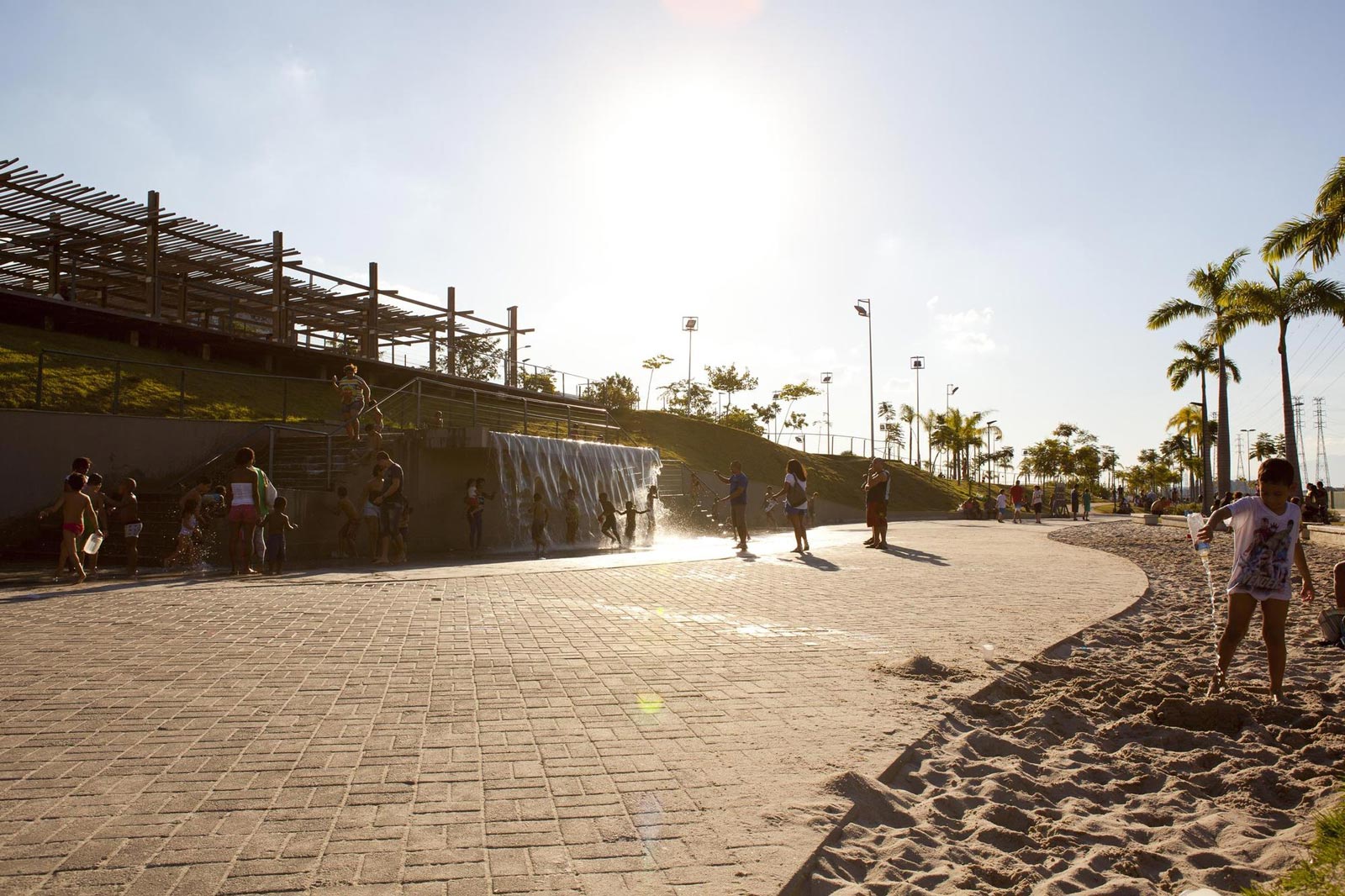
Inaugurated in June 2012, Parque Madureira is located in the neighborhood of the same name, North Zone of Rio. With more than 90 thousand square meters, the place is equipped with multi-sport courts for soccer and table tennis, a bike path and a skate park.
In addition, the Arena Carioca Fernando Torres is also located there, for cultural presentations, next to Praça do Samba, which has hosted international artists such as Billy Paul. The population can still enjoy the Praça do Conhecimento, which offers courses and computers with internet access.
Central do Brasil
The tour starts at Central do Brasil, the one in the movie (which, by the way, was only officially named after the movie). While we were sitting on the train (with air conditioning working!), Raquel told me about the station, which connects the center to the North Zone, West Zone and Baixada Fluminense and is also connected to the subway.
Between one street vendor and another, she also spoke about the importance of the train to the history of samba: “The people worked downtown and lived in the suburbs, so along this path composers knew each other. When there was repression of samba, which was associated with malandragem, they rehearsed on the trains”, she says. To honor this story, even today, on Samba Day, December 2nd, a train journey takes place at this delicious pace. Upon arrival in Oswaldo Cruz, a neighborhood in the North Zone, several events take place, with concerts and samba sessions.
The formation of the Rio suburbs
While in countries like the US, the term “suburb” describes a more bucolic region of the city, with a more peaceful life, in the Latin American context the peripheral regions of cities are usually occupied by low-income population, and in the case of Rio it is not different. Today, “being suburban” takes on a number of social meanings. “The Rio concept of suburbia came from an ideological phenomenon of demoralization of the working class in the region of the city to which a large part of it migrated”, defines this article by Veja Rio.
Until the beginning of the 20th century, much of the city was made up of rural properties and almost the entire population lived in the Center, until a hygienist movement took the field to give the central region “European air”, destroying the tenements and expelling from there the former slaves (many of whom could not find jobs) and the poor immigrants who had come from other parts of Brazil.
These people started to establish themselves along the railway, which facilitated transport, and even today the residents of these regions refer to the train tracks as a reference. “If you say you live in Bangu, people ask which side. The side, in this case, refers to the railway”, explains Raquel, telling another handful of curious information about the formation of neighborhoods and habits that are characteristic of this region, such as feasting on the “rotten” hamburger or the famous French fries in the stalls of Marshal Hermes, served in plastic bags full of flavor, that is, fat.








Single Favela Center
When we got off the train at Madureira station, we stopped by Central Única das Favelas (CUFA), an organization created some 20 years ago by young people from various favelas, with rapper MV Bill as one of its main founders. CUFA also has rapper Nega Gizza, known for her dedication to social causes, and has producer Celso Athayde as general coordinator.
Jongo
I confess that in my ignorance I hadn’t heard of jongo until I spent this season in Rio, in May of this year. Then I discovered that this Brazilian dance of African origin had a lot of influence on the formation of samba. In Madureira is the Casa do Jongo da Serrinha, which used to be part of Raquel’s script, but unfortunately is no longer there because of the complicated situation of violence in Morro da Serrinha. Still, it’s worth looking for an opportunity to get to know this very important cultural event. “When you start attending, you’ll be lost, because there’s no lyrics to follow, but then you’re learning and it’s hard not to get carried away”, guarantees the guide.
Charm Ball
Another highlight of Madureira is the charm, which has its most famous dance below Viaduto Negrão de Lima, better known as Dutão. What started off improvised grew over time, and has now become the most famous dance in the city – especially after the soap opera Avenida Brasil, which gave more visibility to the style. Today, it is considered an immaterial cultural asset in the city.
For those who don’t know, the “charme” (a term coined by DJ Corello, one of its precursors) is a type of party where black music is played, especially contemporary R&B and swing. “It’s a very democratic place, there are people of all kinds, and with any clothes. Usually the guys don’t hit on the girls, people really come to dance, it’s a lot of fun”, says Raquel. I’ll have to come back on a Saturday night to check it out. 🙂
3-4 hours
Daily

Private Tour
Eng-Spa-Por
THIS EXPERIENCE INCLUDES
![]() Ticket for Christ Redeemer
Ticket for Christ Redeemer
![]() Credential guide in English, Spanish or Portugues
Credential guide in English, Spanish or Portugues
![]() Private transfer to and from your hotel
Private transfer to and from your hotel
![]() Covid-19 biosafety protocol
Covid-19 biosafety protocol
| Cookie | Duration | Description |
|---|---|---|
| cookielawinfo-checkbox-analytics | 11 months | This cookie is set by GDPR Cookie Consent plugin. The cookie is used to store the user consent for the cookies in the category "Analytics". |
| cookielawinfo-checkbox-functional | 11 months | The cookie is set by GDPR cookie consent to record the user consent for the cookies in the category "Functional". |
| cookielawinfo-checkbox-necessary | 11 months | This cookie is set by GDPR Cookie Consent plugin. The cookies is used to store the user consent for the cookies in the category "Necessary". |
| cookielawinfo-checkbox-others | 11 months | This cookie is set by GDPR Cookie Consent plugin. The cookie is used to store the user consent for the cookies in the category "Other. |
| cookielawinfo-checkbox-performance | 11 months | This cookie is set by GDPR Cookie Consent plugin. The cookie is used to store the user consent for the cookies in the category "Performance". |
| viewed_cookie_policy | 11 months | The cookie is set by the GDPR Cookie Consent plugin and is used to store whether or not user has consented to the use of cookies. It does not store any personal data. |